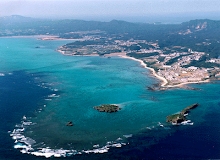
The original sin within Futenma
When U.S. Defense Secretary Leon Panetta came to Japan last month, the first thing he did was to urge Tokyo to move ahead with the relocation of Futenma Air Base from overcrowded Ginowan City to Henoko in northern Okinawa Island. It was an international agreement, he might insist, so that he would be justified to press Tokyo to expedite its early implementation.
But would he? On what legal and moral basis does he think the U.S. can demand Futenma's function be moved to Henoko with the increased function and capability the Marines have entertained to realize SINCE the 1960's? Probably, he might answer that the Henoko relocation is legitimate because it will be carried out in line with the bilateral agreement (the 2006 Roadmap) and that it is morally justified because the relocation will eliminate a highly dangerous situation under which Ginowan citizens are obliged to live their daily life.
This argument may sound rational at first glance. However, what one should never forget is that Futenma Air Base was originally constructed on illegally confiscated land during the Battle of Okinawa and afterwards. Private lands were encroached upon with impunity while area residents were herded into concentration camps. There were five villages there which together with two other villages constituted Ginowan Village (now Ginowan City) with a joint population of more than 12,000. The encroachment of land as well as the construction of the base were carried out in clear violation of an international law (Article 46 of the Hague Convention) and, above all, universal moral principles.
The U.S.'s "taken-for-granted" rights to the land where Futenma Air Base sits is thus like a fence's putative rights to stolen goods. Certainly, the U.S. cannot demand Futenma's replacement in exchange for such stolen goods. Dealing stolen goods is severely punished by law in any country, Japan or the U.S. The bilateral agreement is thus completely void in this sense.
Yoshio Shimoji
Naha, Okinawa
Japan






